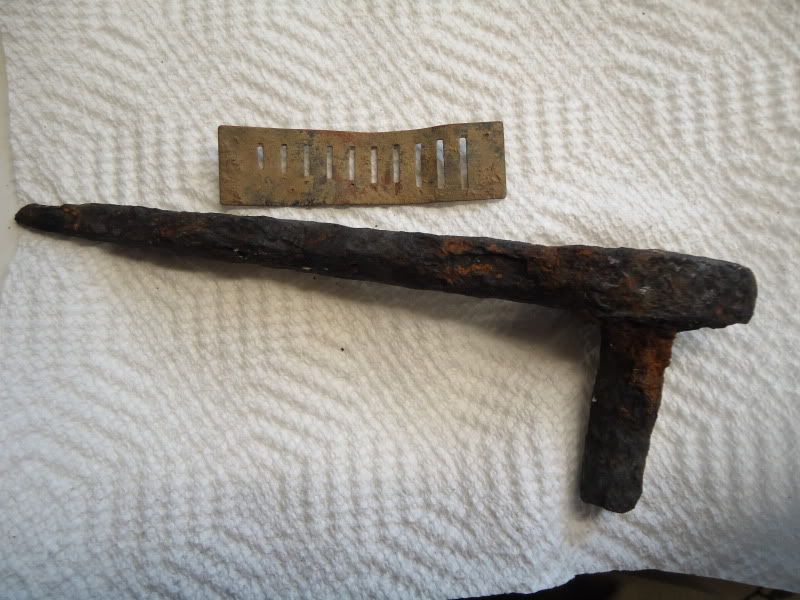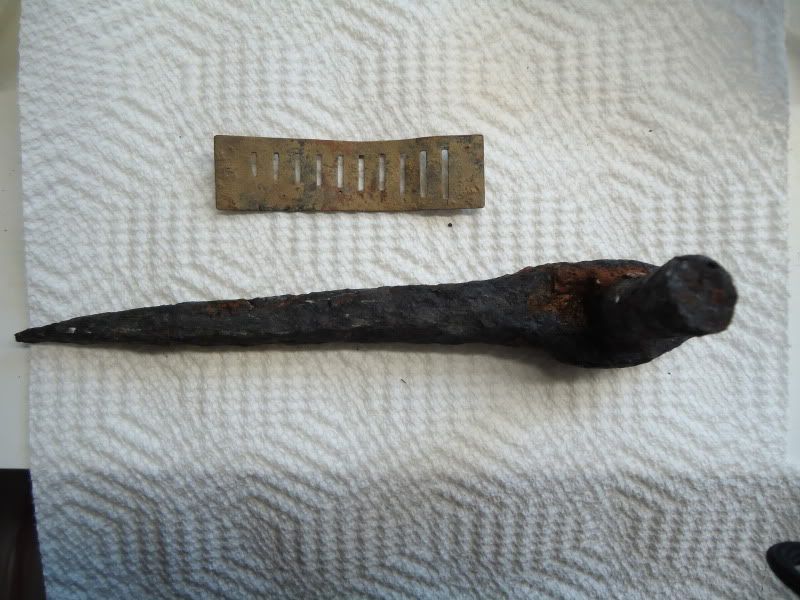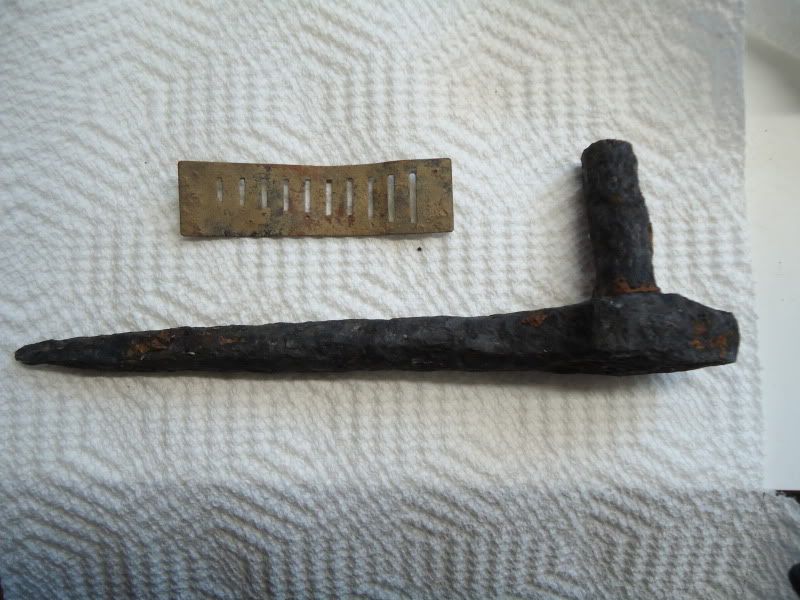I placed a Harmonica reed next too it for help in determining it's size. When I first dug it, I though it was a rusty wratchet wrench, but after electrolysis, I saw the sharpened point and my thinking has changed. Besides, they wouldn't have had a wratchet wrench in a CW camp. I think those came along later! Can someone help me out and ID this oddity???







